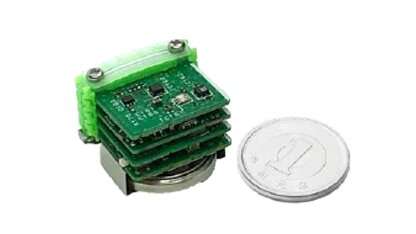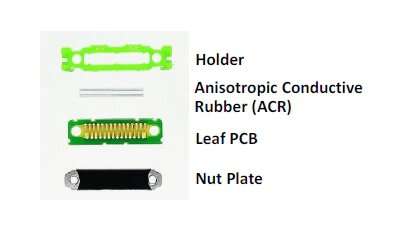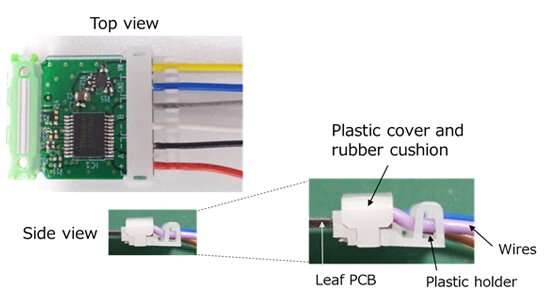No-solder connector technologies for trillion-node engine IoT open platform

Toshiba Electronic Devices & Storage Corporation has developed two connector technologies that allow easy, solder-free assembly of IoT nodes, regarded as essential for realization of the Trillion-Node Engine, the open-source IoT platform. Tests of the connector have resulted in positive evaluations. Toshiba will continue to develop them, and use them in a demonstration unit for Toshiba’s motor control drivers.
The future of the Internet of Things (IoT) is expected to be driven not only by expert engineers developing IoT devices for industry, but also by non-engineers creating IoT devices to handle all kinds of tasks. Realizing this will require an IoT development platform that allows individuals to quickly and easily embody their ideas and to create IoT prototypes, and that supports the development of small, lower power IoT sensor nodes that can be customized to handle various functions and applications. Toshiba and the University of Tokyo are currently evaluating the Trillion-Node Engine as an open IoT platform, and have found it to offer strengths in terms of ease of use.
One notable challenge to be overcome is further miniaturization of IoT nodes, particularly their connectors. They are comparatively large, and require precise soldering by a professional. If an IoT system connects printed circuit boards (PCBs) and motors, a wire harness is needed between the PCBs and motors. The connection between the wire harness and PCBs will result in a terminal blocks 8mm high, which is too large for an IoT platform.

Toshiba has developed Bare Wire Connection Mechanism (BWCM) that uses two connector technologies. The first is an original U-shaped structure of plastic holders to align wires on PCBs. The wires are fixed to the pads with a second technology of rubber cushions and plastic covers; current covers are made of metal. BWCM realizes a small wire connection without any soldering, with a height on the PCB of 2mm, smaller than conventional terminal blocks. Toshiba’s investigation on the retention strength of the wires and PCB confirmed a tensile force of over 3N, stable enough for practical use.
Toshiba has made trial Leaf PCBs, the PCB developed for the Trillion-Node Engine, and sample IoT systems to evaluate the strength of the rubber connectors on Leaf PCBs. Reliability tests, including high-temperature and high-humidity testing, confirmed the reliability and stability of the rubber connectors.
The two connect technologies were realized through Toshiba’s packaging technology for semiconductor and HDDs, system LSI signal connect technology, and IoT system design technology, along with the University of Tokyo’s research in electronics and design technology for low power IoT systems.

Details of the technologies were reported at 2021 IEEE 71st Electronic Components and Technology Conference (ECTC 2021), an international conference on microelectronic packaging, components, and systems technology held online.
In its evaluation of the technologies, Toshiba used research results from a project subsidized by the New Energy and Industrial Technology Development Organization.
Toshiba’s triple-gate IGBT power semiconductors cut switching power losses by 40.5%
Provided by
Toshiba Corporation
Citation:
No-solder connector technologies for trillion-node engine IoT open platform (2021, June 25)
retrieved 26 June 2021
from https://techxplore.com/news/2021-06-no-solder-connector-technologies-trillion-node-iot.html
This document is subject to copyright. Apart from any fair dealing for the purpose of private study or research, no
part may be reproduced without the written permission. The content is provided for information purposes only.
For all the latest Technology News Click Here
For the latest news and updates, follow us on Google News.
